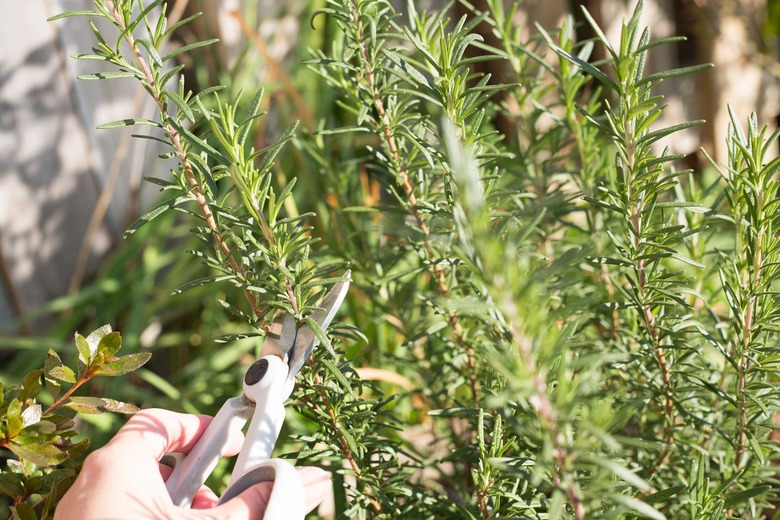How To Propagate Rosemary From Cuttings
We may receive a commission on purchases made from links.
Valued for both its culinary and ornamental properties, evergreen rosemary (Salvia rosmarinus, USDA hardiness zones 7-11), grows well in containers or in the landscape. Rosemary thrives in full sun and well-draining soil. Native to the Mediterranean area, many cultivars exist that vary in height, foliage and flower color, leaf fragrance and growth habit. The best way to propagate rosemary, especially to get the desired nonpatented cultivar, is through cuttings.
Taking Rosemary Cuttings
Taking Rosemary Cuttings
Take cuttings at almost any time, except when the rosemary plant is blooming. Start with a healthy plant that doesn't have any insect pests. Choose a semi-hardwood branch that is semi-ripe, with soft new growth at the tip but beginning to harden a few inches down the stem. Clean the blades of your pruners with a cloth soaked in rubbing alcohol to prevent spreading disease.
Take cuttings that measure about 2 1/2 to 4 inches long. Snip off some of the leaves from the bottom to leave about 1 inch of the stem bare. Don't pull them off, which may break the stem. The bare area should contain two or three leaf nodes (the area where the leaf joins the stem). New roots come from the nodes.
Prepping Rosemary Cuttings
Prepping Rosemary Cuttings
Immediately after cutting off the bottom leaves, dip the bare area of the stem into rooting hormone. You want the sap from the fresh wounds to still be fresh so rooting hormone will cling and dissolve to be available for plant tissues to take up. Prepare 2-inch-wide containers with drainage holes filled with a rooting mixture of equal parts of moistened perlite and peat moss. Make a hole in the center of the pot with a pencil and insert the bare, 1-inch-long end of the rosemary cutting, firming the rooting mix around the bottom to hold the cutting erect.
Rooting Rosemary Cuttings
Rooting Rosemary Cuttings
Place the containers in a warm area with bright, indirect light. For quicker rooting, place the pots on a propagating mat, which keeps the potting soil warm. Keep the rooting medium moist but not soggy, and mist the cuttings occasionally on warm days. Cuttings usually form roots in two to three weeks but may take as long as two months. Tug gently on the cutting to test for rooting. If it resists moving when you pull, it's forming roots.
Transplanting Rosemary Cuttings
Transplanting Rosemary Cuttings
When enough roots have formed to hold the rooting medium together, transplant the rooted cutting to a 3 1/2-inch-wide pot with drainage holes. Use a clean potting mix that contains perlite or vermiculite, but no soil. Leave about 1/2 inch between the top of the soil and the top edge of the pot to hold water. Place the pot back in bright, indirect light.
Allow the top 1/4 inch of potting mix to become dry between watering for best results. When the cutting begins to show new growth, pinch the top 1/4 inch from the top of the cutting so the plant will branch out. From there you can treat the rosemary cutting as a regular plant as it continues to grow.
